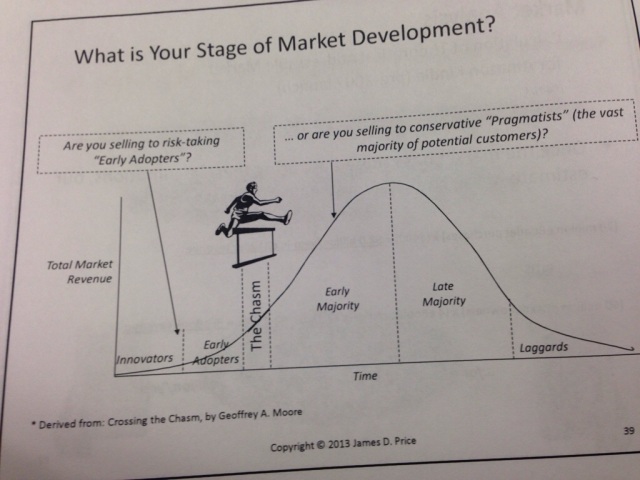Entrepreneurship, as most of us believe is not a recent phenomena but has a vast history of ideas, inventions and intersections beginning from the early 19th Century world of physics. It all started with a thought when law of classical mechanics and thermodynamics had been already established through various experiments by the likes of Galileo, Newton, Boyle, Bernoulli, Cavendish, Franklin and Lagrange. Just when these ideas of fundamental science of motion flourished, better ideas came through. As the horizontal base of the pyramid was set, vertical growth was imperative and inevitable.
The one idea, which started the era of entrepreneurship, was the invention of electric battery by Alessandro Volta in 1800. This invention led to more discoveries by Ampere and Ohm who further demonstrated the parallel electric currents exerted forces on each other and relationship between voltage, current and resistance respectively, which is the basis of fundamental electrodynamics. Just when Thomas Young demonstrated the wave nature of light, understanding of principle of interference and superposition developed. It all made sense, when Michael Faraday built an electricity powered motor in 1821 and formed the basis of current through magnetism i.e electromagnetic induction. Ideas evolved then on the basis of other ideas. Isn’t that entrepreneurship already in true sense? An idea Faraday proposed regarding electromagnetic forces was rejected by the scientific community, which was later accepted by the rest of the world and still forms the development of electromechanical devices that ruled the 19th Century engineering.
Meanwhile, in the field of thermodynamics Joule and Mayer worked on the connection between heat and mechanical energy. This connection was important for the development of steam engines. Carnot captured these basic ideas to form the dynamics of idealized engines and these ideas hold to formulate the most important idea of First Law of Thermodynamics. This led to the second law of Thermodynamics and so on by Kelvin and Clausius. Just when Maxwell through his ideas carried forward the idea of electricity and magnetism, Hertz experimentally confirmed those theories and discovered the photoelectric effect, which led to the invention of radio and television. These ideas were then carried forward by Nikola Tesla and Jagdishchandra Bose to further develop the ecosystem with different ideas. This is how physics led to application based engineering in the time when technology was not mainstream.
If this culture wasn’t prevailing then, the emergence of the 19th Century’s finest entrepreneurs, Henry Ford and Thomas Edison wouldn’t have been possible. During late 1870’s, Henry Ford started working as a machinist in Detroit, USA dealing with portable steam engines while Edison formed his Edison Electric Light company patenting electric light bulbs. By then, Edison had already invented phonograph and telegraph, which changed the way world communicated. With his creation of the first ever industrial research Lab in Menlo Park, New Jersey, Edison then quoted “We will make electricity so cheap that only the rich will burn the candles”. And this still holds true in our time, where candles are expensive than electricity. Edison also invented the motion picture camera. Thank god, he did!
On the other hand, Henry Ford became an engineer at Edison Illuminating Company where he used to work on his personal automobile experiments and his creation of a self-propelled vehicle called Ford Quadricycle. He was then introduced to Edison through a group meeting, where Edison encouraged him to work on his second vehicle. Soon, after his completion of the second project, Ford left Edison’s company to start Detroit Automobile Company with capital from a baron, William Murphy. Ultimately, that company was dissolved and with the invention of 26 horsepower automobile, the backers formed Henry Ford Company with Ford as the chief engineer. The rest, as they say is history. The inventor-entrepreneur philosophy emerged in the beginning of the 20th Century, when a sizable number of physicists were forming companies in the tune to change the world.
As the culture progressed, with the world facing two disastrous wars, one in 1914-18 and the other in 1939-45, these gave the necessity to nations forming different aerial and ground-breaking technologies, primarily to use against each other. They say, necessity gives rise to inventions. And this necessity lead nations to develop what is going to be constructive and in lives of all in the near future. The Second World War held the genesis of the Silicon Valley entrepreneurship, when Americans entered WWII in 1941. This war was literally an electronic war, where nations were battling with each other with different bombing and radar based technologies. Each nation, primarily Germany and USA, built different types of radars, to block and pursue efficient communication with their bases regarding the movements of the opposite camp’s defense. This lead to the formation of Harvard Radio Research Lab in US to understand the signals intelligence and develop electronic warfare. This secret lab was headed by Dr. Fredrick Terman, who was the Dean of Department of Engineering at Stanford University.
The Stanford director, due to the pressure from the government and the culture shift, encouraged students to turn to entrepreneurship and start their own companies. The students included William Hewlett and David Packard, who went on to start HP Computers. Since then scientific research and development in the universities across US begun to flourish and became the precursor to the beginning of 20th Century entrepreneurship. The idea of open-source mentality among the physicists led to the widening developments in science and technology entrepreneurship. After the WWII, Terman’s strategy included the setup of Electronic Research Laboratory (ERL) to promote basic and unclassified research in building radars, power-tubes and jammers. Soon after the setup of Applied Electronics Laboratory (AEL) and the merge of both ERL and AEL became Systems Engineering Laboratory (SRL) at Stanford. It was then, different microwave and systems companies emerged in Silicon Valley to produce equipments for the US defense. And that was the mark of beginning of the Silicon Valley entrepreneurship.
After the independence in 1947, India was at the forefront of social and political havoc, but the ideology among Indian entrepreneurs despite that did not change and they invested in their own independent nation for a better future. One of those entrepreneurs was Vikram Sarabhai, who after studying natural sciences at Cambridge returned to India to set up a research institution, Physical Research Laboratory (PRL) in Ahmedabad. He was the founder of Indian Space Research Organization (ISRO) and pursued the government of India to start a space research program, when Russia just launched Sputnik into the space. Moreover, he was also one of the founding members of one of the premier institutes in India, Indian Institute of Management (IIM), Ahmedabad. He was a physicist turned entrepreneur. And India is highly indebted to him for what his vision has given to the country. The idea of Entrepreneurship by then had already established by the pioneers G.D Birla and J.R.D Tata. A new wave of entrepreneurship emerged in India as a consequence of the existing business tradition and culture.
As different electronics companies emerged in the Silicon Valley in the mid 1950s, William Shockley, who was the director of anti-submarine warfare operations group at Columbia in 1942-43 and Solid State Physics group leader, co-invented the first point contact transistor with help with Bell Labs. He was then jointly awarded Nobel Prize in Physics in 1956. By then, Shockley has already founded Shockley semiconductor in 1955, which was the first semiconductor company in California. The traitorous eight which included Gordon Moore, Robert Noyce and Sheldon Roberts who were the youngest employees at the firm demanded to replace Shockley from the management team and eventually left Shockley semiconductor to start Fairchild Semiconductor. Eventually, Moore and Noyce left Fairchild to start Integrated Electronics (Intel) and others started Advanced Micro Devices (AMD). Though Shockley maybe a bad manager, but he was a great researcher and someone who laid the foundation of chip companies, which dominated the industry for the next 20 years. The 65 chip companies which were founded came from the first and second generation teams at Shockley Semiconductor. Some entrepreneurs have the tendency to make other entrepreneurs through knowledge transfer and freedom to work on their projects. Knowingly or unknowingly, he made a lot of entrepreneurs under his own belt. In true sense, Shockley was the father of the Silicon Valley, the valley that revolutionized the world of electronics.
Gordon Moore, who was a chemist and physicist and Robert Noyce, who was a physicist and co-inventor of integrated circuits, started Intel after leaving Fairchild Semiconductor with capital investment from Arthur Rock. With Intel breaking the barrier, the world changed with the inbound of microprocessors and micro controllers, the most important components of CPU used in the computers. And we all know what happened after that! (The device on which you are reading this post).
Physicists have been old hands at entrepreneurship. Today, more physicists than ever are involved in different startups all over the world either as founders or employees. Startups are inventing different physics based innovations and products, since Patenting and Intellectual Property law in US are adopted in the culture and has become popular among the early stage startups. One of the Entrepreneur who is considered as the next generation Steve Jobs, is Elon Musk. Elon has studied physics as his second bachelors degree from University of Pennsylvania and is the founder of SpaceX, who’s one of the mission is to find life at Mars by 2020, and is best known as the co-founder of online payment giant, PayPal and electric vehicles manufacturer, Tesla Motors. The interests he developed over rocket technologies and clean technologies were due to his aptitude and love for physics, and he credits the subject for all what he is today.
Today, entrepreneurship is popular among scientists and young PHDs and more people from physics background are starting disruptive technology based startups. Though starting a technology company is a complex operation and takes time to reach the break-even, the success is the idea where solid businesses endure over time, generate steady employment, develop intellectual property and conduct a mix of R&D for game-changing commercial results. To all what we see and experience today is the result of works and theories by thousands of scientists over last two centuries and the ones who implemented those works in building the future. Theories connected with realism of behavior, materials, systems and devices, and technologies erupted like the volcano. The horizontal base of physics and nature of sciences has been creating the way for our vertical future. And Entrepreneurs are the ones adapting it.




